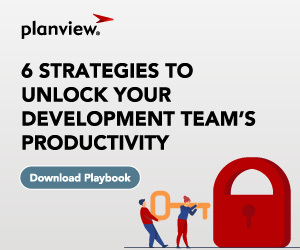
When delivery time is slow and unpredictable, demand exceeds capacity, and constraints and dependencies are poorly understood, it’s hard to deliver fast or pivot quickly.
And now, paired with a sluggish economic environment, these factors put increasing pressure on anyone who’s focused on creating and delivering business value faster (read: everyone).
To pick up speed, several well-known companies—including Spotify, ING Bank, and Walmart—have implemented a product operating model over strictly working in a project-based model.
When companies adopt a product operating model, they move away from short-term goals and toward long-term value creation.
Paired with immediate customer input, product-based models enable increased agility, faster time to market, improved customer satisfaction, and optimized resource allocation.
But just like you can’t reach the top of a mountain without climbing – if you’re operating in a project-based model now, you can’t achieve product-operating-model maturity before you make the project to product shift.
Benchmarking the Shift
Last year, we published a report that detailed how people, teams, and companies navigate the adoption of product operating models.
The 2023 Project to Product State of the Industry report helped organizations benchmark their journey against others in their industry (and in aggregate), as well as learn recommendations for advancing their transition from a legacy project model into a mature and sustainable product operating model.
Some of the most compelling data points were:
- Only 8% of what’s planned by Agile teams gets delivered.
- Business leaders believe IT teams can deliver 10 times their actual capacity.
- Just 8% of respondents have operationalized the shift, leaving 92% who haven’t realized or captured the full value at scale.
This month, we launched an all-new survey to gauge where companies are now, and hear new insights from teams and leaders at all stages of the journey.
What’s Top of Mind for Teams and Leaders?
Through conversations with leaders of project-based teams, product-based organizations, and hybrid approaches, we’ve developed a set of hypotheses for assessing the state of product operating model adoption.
These are the big questions we’re aiming to answer with the 2024 survey and corresponding report.
Note: Coupled with each question is data from last year’s report. The data explains the relevancy of each question and gives you a quick baseline for gauging your own journey. Data from this year’s survey will help answer the five questions below with fresh insight.
1. Is there a correlation between product operating model maturity and performance?
Baseline data from the 2023 report: Stronger products come from mature product models.
In fact, where product managers are the long-term custodians of product vision, roadmap, and visibility, the value streams demonstrate a healthy mix of work completed (such as technical debt remediation, defect improvement, risk prevention, and feature development).
They also direct capacity toward revenue protection work. The combination of those benefits ensures quality and capacity for feature delivery over the entire product life cycle.
2. What is the status of product operating model adoption?
Baseline data from the 2023 report: Becoming a company that does everything by the product approach is a process that takes time—at least five years (although some companies are able to execute it faster).
The current journey has five stages (the names are listed in the graph below) and works toward full adoption of the product model. While leaders showed a favorable view of the project to product shift, the majority of companies are in Stage 2 or 3 (with just 8% of respondents in Stages 4 and 5).

3. Are companies converting all their project teams to product teams?
Baseline data from the 2023 report: With 64% of respondents in Stage 1 or 2, it’s unclear whether the companies have stalled or are still piloting, with the active intent to expand.
Additionally, the high number of respondents representing the early stages of product model adoption could suggest that companies are content with running a blend of project-based and product-based teams, based on the nature of their work.
4. What are the most common problems in implementing a product operating model?
Baseline data from the 2023 report: Two attributes surfaced in 2023 that impair an organization’s ability to expand and operationalize the shift: a weak product management discipline and a lack of feedback mechanisms with customers.
Sixty-four percent (64%) of respondents report that project management philosophies still dominate their backlog management and prioritization decisions, leading to technical debt buildup and increasing maintenance costs over time.
And, only 11% of respondents have universal, programmatic mechanisms for collecting customer feedback regularly and consistently, including from internal customers.
5. Is a product operating model better for employee engagement?
Baseline data from the 2023 report: Top-down annual project-based budgeting cycles, without feedback and the flexibility to reallocate, creates waste and burnout.
Because teams are given large batches of demand that they don’t have the capability to execute (business leaders believe IT teams can deliver 10x more than their actual capacity), they’re set up for missed commitments and unrealized revenue targets.
Share Your Insights
So, there you have it: Real-world results from the 2023 Project to Product State of the Industry report, showing baseline data for what’s top of mind for teams and leaders making the project to product shift.
What will the data show this year? We’ll find out this fall. In the meantime, check out the inaugural Project to Product Summit, a two-day virtual conference on October 8 and 9, 2024. This event promises to advance every organization’s practices and methods toward the project-to-product shift. Join Us for the Summit




